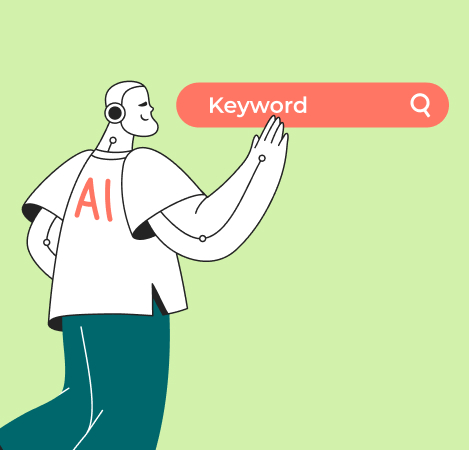Media Inflation and the Anatomy of a Rising CPO

Media inflation isn’t an excuse for poor performance; it’s a market constant. This is a guide for Marketing Directors on how to stop fighting reality and start mastering it.
The slide is up. The graph shows CPO is up 45% year-on-year. The Managing Director furrows their brow and asks the all-too-familiar, rhetorical question: “A year ago, we could acquire a customer for £50. Why are you now spending £72.50? Has the team’s performance dropped? Has the agency gotten lazy? Who do we need to sack?”
This scene is the primary headache for today’s CMO. You’re being backed into a corner, forced to compare today’s results with a past that no longer exists, ignoring the fundamental law of the market: media inflation.
This article isn’t a get-out-of-jail-free card for marketers or their agencies. It’s a breakdown of the new economic reality. I’ll explain why your CPO/CPL is destined to rise (no surprise there), how to measure it properly, and, most importantly, how to distinguish between objective market-driven growth and your team’s inefficiency. The “good old days” are gone. It’s time to accept it.
The Anatomy of Media Inflation
Let’s set aside recent history about platforms leaving or entering specific markets. Media inflation is a systemic phenomenon; it has always existed and would be with us even with a full suite of digital platforms. It is built on three iron-clad factors and one ‘shadow’ contributor.
1. More Demand Than Supply. Advertising inventory — or more accurately, the attention of a solvent audience — is a finite resource. There are only 24 hours in a day, and the number of eyeballs staring at screens isn’t growing at the required rate, especially when every brand is chasing the “25–45-year-old with a high disposable income” demographic. Meanwhile, the number of companies wanting to serve ads to this very audience is constantly increasing. New start-ups, bigger budgets from established players, and the aggressive expansion of national giants — they all flood into the same Google Ads auction, the same Meta feeds, and the same TikTok For You pages to fight over the same limited pool of users.
The result: More money is chasing the same amount of attention. The auction overheats. Bids (CPC, CPM) go up. It’s fundamental economics.
2. The Asymmetric War: ROAS vs. Venture Capital. You’re operating on a model where your Return On Ad Spend (ROAS) needs to hit a certain target, or your Marketing Efficiency Ratio (MER) can’t dip below a specific threshold. Your objective is profitability, here and now. But in almost every market, there’s a competitor who has just closed a funding round or has pivoted to an aggressive growth strategy. Their goal isn’t profit; it’s market share acquisition. They are perfectly willing to operate at a loss for a month, a quarter, or even a year to achieve it.
So, what do they do? They storm into your auction and set bids that allow them to hoover up all the high-intent traffic, regardless of the cost. Think of a well-funded D2C mattress brand or a new fintech app, backed by venture capital, entering your space. You simply cannot compete with their bids without obliterating your own KPIs. You either sacrifice volume and market share, or your CPO skyrockets.
3. The Depletion of “Hot” Audiences. The most loyal, cheapest, and highest-converting users — the “low-hanging fruit” — were picked long ago. With each passing year, you are fighting for an audience that is colder, more sceptical, and suffering from acute “banner blindness.” To convince them, you need more touchpoints, higher quality (and more expensive) creative, and far more sophisticated funnels.
The result: Even if your cost-per-click (CPC) miraculously remained the same, your conversion rate (CR) would naturally decline over time. And since CPO = CPC / CR, a falling denominator combined with a rising numerator produces a multiplicative, explosive growth in your final cost per order.
4. The Shadow Tax: The Growth of Ad Fraud. The higher the stakes in the auctions, the more lucrative ad fraud becomes. Entire industries have emerged dedicated to generating bot traffic, click fraud, and fake leads. In response, the platforms and ad verification services (like DoubleVerify or Integral Ad Science) invest heavily in developing anti-fraud systems. You, the advertiser, end up paying for this in one of two ways: either you pay a premium for “clean,” verified traffic, or you lose a slice of your budget to bots. Both scenarios lead to the same outcome: your effective CPO for a real, human customer goes up.
The Market in Numbers
To ensure we’re not just dealing in hypotheticals, let’s look at the data published annually by industry leaders. I am deliberately not tying this to a specific year, as the trend is relentless and consistent.
- The IAB (Interactive Advertising Bureau): Consistently reports double-digit annual growth in the digital advertising market. This money doesn’t materialise out of thin air — it’s injected into the same auctions, cranking up the competition.
- Agency Group Forecasts (GroupM, Dentsu, Magna etc.): In their annual and quarterly reports, these groups explicitly forecast media inflation across different channels. A typical forecast might look like this:
- Paid Search (Google, Bing): Projected CPC/CPM growth — 15–25% per year.
- Paid Social (Meta, TikTok): Projected CPM growth — 20–30% per year.
- Connected TV (CTV) & Online Video: Projected CPM growth — 20–35% per year.
A critical takeaway: If the market, on average, is forecasting a 25% increase in acquisition costs for your key channel, and you are demanding a CPO that matches last year’s performance, you are asking for a miracle. You are forcing your team to either slash reach and cede market share, or to resort to “grey-hat” tactics — clickbait offers like “90% off!”, exaggerated product claims, and other methods designed to inflate CTR without delivering a meaningful increase in qualified leads.
A second critical observation: When you see these “market averages,” remember that averages hide the extremes. In hyper-competitive and high-margin niches — think insurance, legal services, or enterprise SaaS — it’s not uncommon to see CPO growth of 100–200% year-on-year, simply because the lifetime value of a customer in those sectors can absorb such an increase.
From Chasing Ghosts to Managing Performance
So, a rising CPO is inevitable. Does this mean we can all relax and blame any and all failures on “the market”? Absolutely not.
The job of a modern CMO is not to get stuck in the past or to halt inflation, but to outpace it. Your new mandate, the absolute baseline for performance, is to ensure your key metric (CPO, CPL, MER) grows at a rate that is at, or preferably below, the rate of media inflation.
Step 1: Conduct a ‘Performance Hygiene’ Audit. Before you can even begin a conversation about media inflation, you need to earn your licence to have it. Before you accept the next growth target from your MD, check you have the basics nailed down:
- End-to-End Attribution: How accurately and transparently are you tracking CPO/CPL? Is your e-commerce tracking in Google Analytics 4 (GA4) properly configured? Do you have a clear, integrated view that connects customer acquisition sources to your internal CRM and revenue data?
- Lead Quality: Do you distinguish between a raw “lead” and a “Marketing Qualified Lead” (MQL) or “Sales Qualified Lead” (SQL)? Where is this tracked, how transparent is the process, and who is accountable for that qualification rate?
- What Does ‘Optimisation’ Mean to You? Is your team or agency systematically working on campaigns? Are they constantly testing new offers, refreshing creative, restructuring accounts by geo or product line, exploring new targeting options, and actively managing bids? Is this a continuous process or a reactive one?
- Ownership of Conversion: Name the person responsible for your website’s conversion rate. Who, specifically, is on the hook for that metric? Hire someone or delegate this to a person or partner who can be held accountable. Who is driving improvements in UX/UI, page load speed, landing page offers, and other conversion proxies? Let’s be blunt: a mere 10% uplift in your conversion rate can offset a significant chunk of media inflation without spending a single extra pound on ads.
If you can tick all these boxes, you’re ready to move on to strategy.
Benchmark Against the Market, Not Your Past
Your new North Star metric is relative CPO growth.
Your goal is not to preserve last year’s CPO. Your goal is to ensure your CPO grows more slowly than the media inflation rate for your primary channels.
If market inflation in paid search was +25% and your CPO only grew by 15%, your team and agency are heroes. You have beaten the market. This is a victory that should be celebrated and bonused. If, however, your CPO grew by 40%, it’s time to start asking your team some tough questions.
Manage a Portfolio, Not Just a Channel
Stop thinking in terms of, “How much budget should we pour into Google Ads this month?” Start thinking like an investor managing a portfolio of assets.
- Diversify: Work with your team to actively seek out new, less overheated channels. Today, this could be Reddit Ads, programmatic audio, retail media networks (like Amazon Marketing or Walmart Connect), or partnerships with niche creators. Yes, the volume might be smaller initially, but the cost per acquisition could be significantly lower. Your job is to find these “undervalued assets” before your competitors do. Even within established platforms, there are always under-utilised placements and audiences waiting to be discovered.
- Shift the Focus to LTV: Make the business case to senior leadership to move from a pure CPO model to a CPO-to-LTV ratio. Yes, we acquired this customer for 30% more, but data shows this channel delivers customers who make three purchases a year, not just one. This completely reframes the economics of acquisition. In my experience, it’s shocking how few marketing directors have a robust LTV model integrated into their acquisition economics. Why is that? There’s no good answer.
- The War for Conversion: Your greatest lever against media inflation is not found in an ad platform’s dashboard; it’s on your website and in your product. Investing in conversion rate optimisation (CRO) provides the most powerful, long-term defence for containing your marketing costs as a percentage of revenue.
A successful marketer is a strategic investor, not a historical statistician.
Demanding “last year’s CPO” is a direct path to internal conflict, stagnation, and ultimately, losing the competitive race. It is a fundamental misunderstanding of how modern marketing works. It forces your team into short-sighted tactical decisions instead of long-term strategic development.
Media inflation isn’t a problem; it’s an axiom. It is the gravity of digital marketing. You cannot switch it off, but you can build a rocket ship that overcomes it.
Here’s to high-quality leads and a sober assessment of your marketing.




